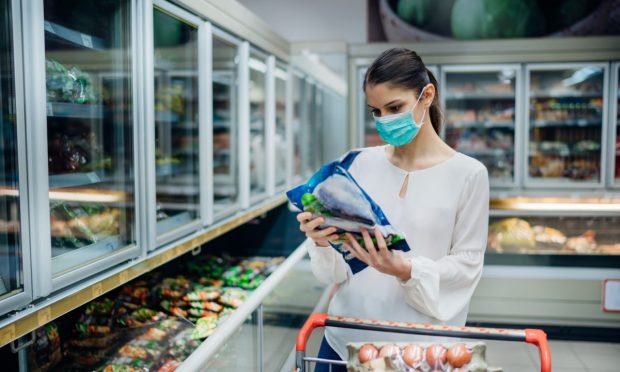Restaurant Meals Take Over Grocery Stores as Diners Seek Convenience

With consumers increasingly seeking quick meal options, restaurants are making their way into the supermarket.
In an interview with PYMNTS, Geoff Alexander, CEO of fast-casual chain Wow Bao, spoke to this shift. The brand recently announced that its partnership with Hissho Sushi, a company that runs sushi counters at grocery stores, has brought its food to 1,000 locations with 500 more on the way in the months ahead.
“The supermarket has really become where consumers get all their meals at home,” Alexander explained. “It’s not just dining out now in restaurants — grocery stores are finding different ways to keep people inside the store to find their next meal. Whether it’s prepared food counters or partnering with restaurants, they’re making additional opportunities for people to do one-stop shopping.”
According to data from PYMNTS’ study “Digital Economy Payments: Consumers Buy Into Food Bargains,” which drew from a July survey of nearly 2,700 U.S. consumers about their food shopping habits, 37% of consumers bought prepared food on their most recent grocery trip, up 7 points from the 30% of consumers who had done so back in November 2021.
Certainly, convenience plays a role in the rise of prepared food at the supermarket just as it plays a role in the rise of off-premise restaurant ordering. Consumers are less willing than they were in previous years to spend significant amounts of time each day cooking their meals. For instance, food and beverage giant Campbell Soup Company observed on its recent earnings call that consumers are reluctant to spend more than 20 minutes cooking dinner or 10 minutes preparing lunch.
Indeed, Alexander noted that, rather than buying groceries and then having to find somewhere to order dinner and go pick it up (or wait for it to arrive), consumers prefer to link their meal-purchasing occasions when given the option.
“You’re buying your milk and your salad fixings and all these things, but you don’t have to go home and cook dinner that night,” Alexander said, “You’re bringing that meal home. That’ll be dinner tonight, and you have your groceries for the next two, three, four days.”
Additionally, purchasing cooked food from the grocery store tends be less expensive (and does not require the customer to tip), a key factor now as many consumers seek ways to save on food amid inflation. Indeed, PYMNTS’ report “The 2022 Restaurant Digital Divide: Restaurant Customers React To Rising Costs, Declining Service,” for which we surveyed more than 2,300 restaurant customers in December, reveals that the vast majority have made changes to their dining spending in response to inflation.
Anywhere from 67% to 88% of diners, depending on generation, have done so, with the most popular change cited being purchasing from restaurants less often.
Alexander added that, with commodity price inflation and labor challenges, restaurants’ “prices continue to grow,” noting that grocers’ years-long efforts to gain share from restaurants by pricing competitively and optimizing their offerings are paying off.
Down the line, he predicts that restaurant offerings will increasingly make their way into additional retail and hospitality channels.
“I think you’re going to see the convenience factor” in how restaurants continue to grow, Alexander said, noting that might involve grocery or convenience stores or “coffee shops partnering with restaurants, bars partnering with restaurants.
“The best part about it is, the food continues to get better and better at all these different places. I think that’s a true testament to the entrepreneurial spirit of the restaurant industry.”

